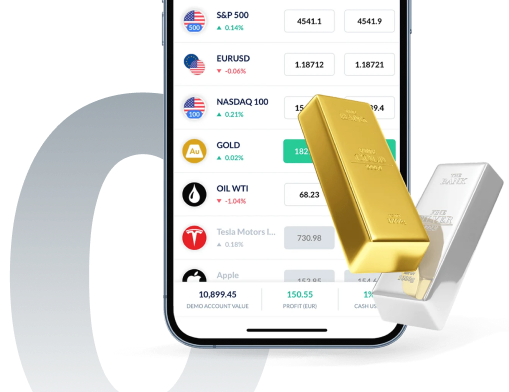Access 1,200+ global CFDs instruments.
Access a plethora of trading opportunities across the financial markets.

Access 1,200+ global CFDs instruments.
Access a plethora of trading opportunities across the financial markets.

Institutional trading drives the global financial markets, moving vast amounts of capital and shaping the broader market landscape. In this article, we dive into the world of institutional trading, breaking down its participants, operations, and role compared to retail trading.
What is institutional trading?
Institutional trading involves large-scale buying and selling of financial instruments, such as stocks, bonds, currencies, and commodities, executed by major organizations like mutual funds, pension funds, insurance firms, and banks. These institutions handle substantial transaction volumes, which often have a pronounced effect on market prices. Institutional trading is characterized by sophisticated investment strategies, state-of-the-art technology, and a preference for long-term positions.
Types of institutional traders
There are various types of institutional traders, each with its own goals and trading approaches. Understanding these different players gives insight into the scope of institutional trading and its profound influence on the financial markets. Here, we discuss the primary types of institutional traders and their roles:
- Mutual funds: Investment companies that pool funds from individual investors to create diversified portfolios consisting of stocks, bonds, and other assets.
- Pension funds: These entities manage retirement funds, investing in a mix of assets aimed at securing growth and stability over the long term.
- Insurance companies: Insurance firms invest premiums collected from policyholders in a variety of assets to ensure the company remains financially strong and capable of meeting future claims.
- Hedge funds: Known for employing aggressive, high-risk strategies, hedge funds use tools like leverage and short selling to seek maximum returns.
- Banks and financial institutions: Banks engage in both proprietary trading (on behalf of their own accounts) and client trading, covering a broad array of financial products from equities to derivatives.
Practice with a Demo Account
Try our demo account and experience real market conditions.

Each institutional trader category comes with unique investment strategies and goals, shaping various aspects of the financial landscape. Together, these players drive market trends and create liquidity, forming the backbone of global markets.
Examples of institutional trading
Institutional trading manifests in several ways, from large-scale stock transactions to significant moves in currency and bond markets. These examples illustrate the sheer scale and impact of institutional trading activities:
- Large stock acquisitions: When institutional investors buy massive amounts of stock, the stock price may rise due to heightened demand and market perception shifts.
- Foreign exchange market activity: Institutional traders dominate the currency markets. Their large trades can influence exchange rates and shift global financial trends.
- Bond market influence: Institutions often invest in government or corporate bonds, and their trading actions affect interest rates, bond prices, and overall credit market conditions.
These examples highlight the scale at which institutional traders operate. Whether through significant stock purchases, currency moves, or bond investments, their decisions carry weight and can shift entire market sectors. Understanding these operations is key to grasping how the market behaves on a large scale.
What's your Trading Style?
No matter the playing field, knowing your style is the first step to success.

What's your Trading Style?
No matter the playing field, knowing your style is the first step to success.

Key differences between institutional and retail traders
While both institutional and retail traders participate in the financial markets, their approaches, resources, and impacts vary greatly. Below are the major differences between these two types of market participants:
- Trading volume: Institutional traders handle significantly larger transactions than retail traders, granting them a more significant influence on the market.
- Market impact: Institutional trades can lead to notable price movements, especially in less liquid markets, a phenomenon that retail trades rarely cause.
- Access to resources: Institutions benefit from advanced technology, extensive research, and real-time data, providing them with a competitive edge over individual traders.
- Investment horizon: Institutional traders often adopt a long-term investment perspective, whereas retail traders may focus on short-term trades for quicker gains.
- Regulatory oversight: Institutional entities are subject to more stringent regulations than retail traders, with requirements tailored to their size and potential market impact.
In essence, institutional traders wield more power within the markets due to their size, access to superior resources, and longer investment horizons. These differences make institutional and retail trading distinctly separate forces, each contributing in different ways to the overall market ecosystem.
Trade Demo: Real trading conditions with zero risk
Trade risk-free on Skilling’s award winning platforms with a 10k* demo account.

Conclusion
Institutional trading is a critical component of the global financial system, shaping trends and influencing asset prices. With large capital allocations and advanced trading strategies, institutional traders play an essential role in market liquidity and price discovery. By understanding the types of institutional traders, their trading activities, and how they differ from retail traders, investors can gain a deeper understanding of market dynamics and the forces that drive price movements.











